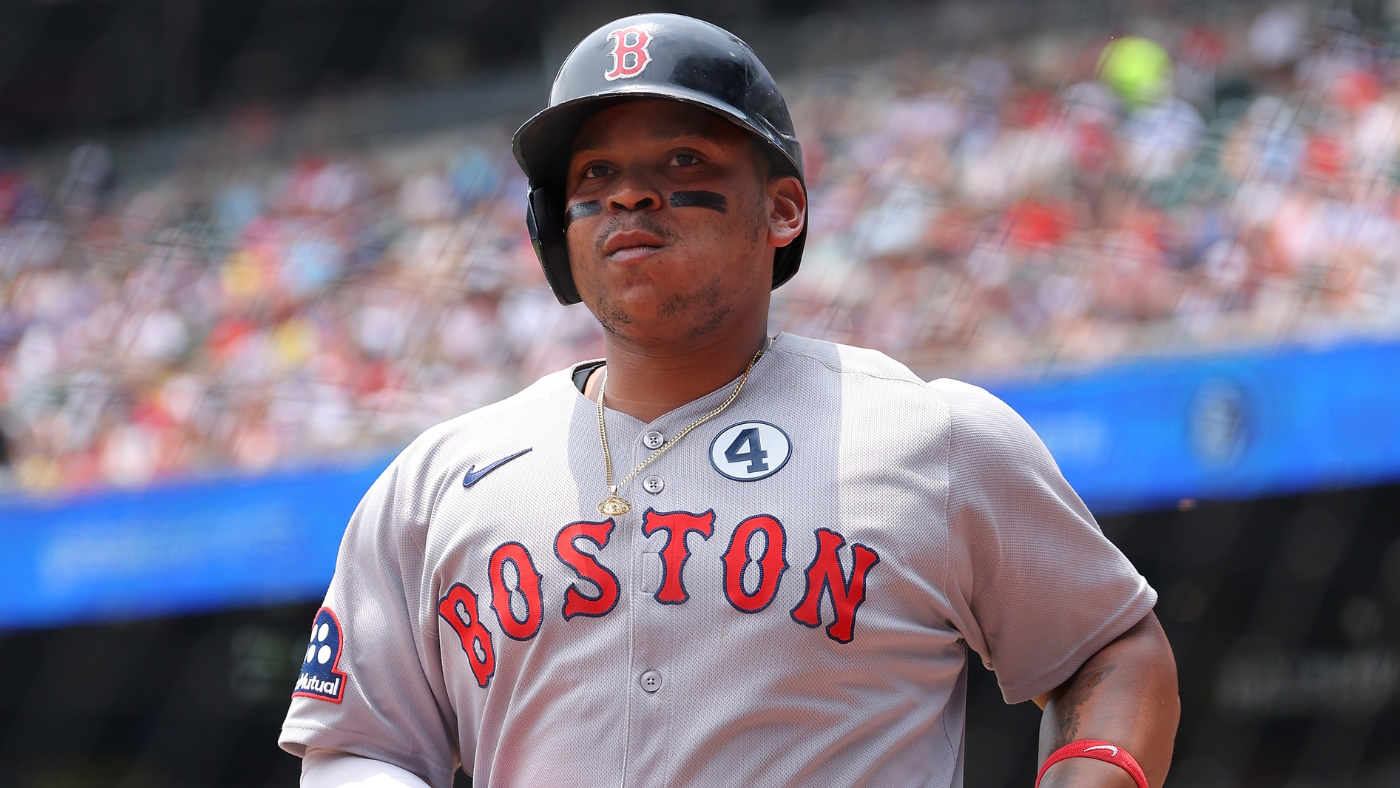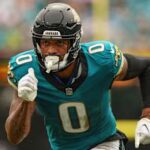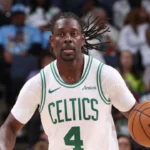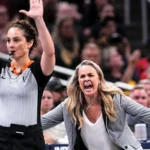For Boston Red Sox fans, a disheartening narrative is playing out once again. A talented, homegrown slugger, once considered a cornerstone for the future of the franchise, has been shipped out. This sounds remarkably familiar.
It’s a story that has unfolded multiple times in recent years, leaving fans questioning the team’s long-term strategy and commitment to its stars. The latest chapter involves Rafael Devers, the last remaining direct link to the triumphant 2018 World Series-winning core. Devers, at 28 years old, has been traded to the San Francisco Giants, even as the Red Sox remain ostensibly in a playoff race.
The term “decamped” is a polite way to describe a pattern of star players either being traded away or allowed to depart in free agency. The Red Sox infamously dealt superstar Mookie Betts to the Los Angeles Dodgers in early 2020. Then, in December 2022, they effectively ceded shortstop Xander Bogaerts to the San Diego Padres, after making him a significantly smaller contract offer than San Diego’s. On Sunday, the “rapid unscheduled disassembly” of that celebrated 2018 core was completed with Devers’s departure.
In return for their long-tenured third baseman, the Red Sox received right-handed swingman Jordan Hicks, left-handed starter Kyle Harrison, and two prospects: outfielder/first baseman James Tibbs III (the Giants’ 2024 first-round draft pick) and pitcher Jose Bello. This string of departures leaves a void, both on the field and in the hearts of Boston’s loyal fanbase.
The Last Link: Rafael Devers’ Departure
Rafael Devers’ trade marks a significant moment for the Boston Red Sox, removing the final active member of their iconic 2018 championship team.
Devers: Boston’s Best Bat Amidst Discord
Rafael Devers, who is currently 28 years old, had spent the entire season surrounded by internal discord. This tension primarily stemmed from his displacement at third base, his traditional position. Subsequently, he expressed strong resistance to playing first base, a position the team wanted him to learn. Despite these internal frictions and his clear discomfort with the positional change, Devers had consistently been Boston’s best bat throughout the season. His offensive production remained elite, showcasing his value to the lineup.
Furthermore, he was the team’s longest-tenured player, having been with the organization since his teenage years. His departure signifies a profound shift. Once again, the Red Sox appear to be testing the limits of how many faces a franchise can shed before it completely destroys its identity and alienates its dedicated fan base. This pattern of trading or losing beloved, homegrown talent creates an unsettling feeling for supporters.
The Homegrown Trio: From Promise to Dispersal
The core of the 2018 Red Sox championship team was built on a foundation of homegrown talent. The team acquired Betts, Bogaerts, and Devers as teenagers, nurturing their development through their minor league system. Xander Bogaerts, hailing from Aruba, was signed as an amateur free agent in 2009. Mookie Betts, a Nashville native, was drafted directly out of high school in 2011.
Rafael Devers, from the Dominican Republic, was signed in 2013. In October 2018, when the team celebrated its remarkable achievement—capping off a franchise-record 108-win regular season with an impressive 11-3 playoff run that led to a World Series title—this formidable trio was in their prime. Betts and Bogaerts were both 26 years old, while Devers was a youthful 22.
The stage seemed perfectly set for this dynamic group to lead the Red Sox for the next decade or even longer, establishing a new dynasty. Instead, a very different reality has unfolded. These three highly talented players now find themselves facing off in a tight race for the NL West title with their respective National League West teams.
Meanwhile, their former team, the Red Sox, are stuck in fourth place in the American League East. They are struggling to secure a wild card spot amidst a crowded pack of contenders, who sit behind the three current occupants of the playoff positions: the division-rival Tampa Bay Rays and Toronto Blue Jays, as well as the Seattle Mariners. This stark contrast highlights the significant shift in fortunes for both the players and the franchise.
Echoes of Betts: A Haunting Precedent
The trading of Rafael Devers, while impactful, inevitably draws comparisons to the monumental Mookie Betts trade, a deal that continues to haunt the Red Sox faithful.
The Unforgettable Betts Blunder
No exchange in recent Red Sox history could be as shocking and devastating as the Mookie Betts deal. This trade, executed in early 2020, has undeniably worked out precisely as Boston fans feared it would. Betts has consistently been a top-10 position player across Major League Baseball since the notorious trade. His performance has been stellar, solidifying his status as one of the game’s elite talents.
He has also gone on to win two World Series titles with the Los Angeles Dodgers, adding more rings to his illustrious career. In stark contrast, the Red Sox have been mired in mediocrity. Since the Betts trade, the team ranks a dismal 16th leaguewide in total wins. They have suffered through three last-place finishes in their division and have made only one playoff appearance. This stark divergence in fortunes graphically illustrates the profound negative impact of that trade on the Red Sox franchise.
Of the three players Boston received back in the trade for Betts (and veteran pitcher David Price), only one remains on the Red Sox roster today: catcher Connor Wong. His performance this season has been underwhelming, hitting a meager .145/.254/.145, and he has since lost his starting job to rookie Carlos Narváez.
Devers’ Departure: Different But Still Stunning
While Devers’s departure is not a complete “Betts trade redux” in terms of either its initial shock value or its immediate, drastic impact on the Red Sox roster, it is stunning by almost any other standard. Devers, similar to Betts, has been a consistently elite performer, ranking as a top-25 position player across MLB since the infamous Betts trade.
He was the one remaining Red Sox star who had actually stayed with the team—and, significantly, the one whom the Red Sox had chosen to invest in financially. In January 2023, the then-26-year-old Devers signed a massive 11-year, $331 million extension with the Red Sox. This deal included 10 years and $313.5 million on top of the salary he was already owed for that season. To this day, it remains the largest contract in team history.
That groundbreaking deal was set to run through the 2033 season. However, the eight-plus seasons and more than $250 million remaining on that substantial pact are now San Francisco’s to either celebrate or regret, depending on Devers’s future performance. This sudden reversal on such a significant financial commitment to a franchise player adds another layer of perplexity to Boston’s decision-making.
Unorthodox Timing: A Playoff Contender’s Sacrifice?
The timing and nature of the Rafael Devers trade are particularly extraordinary, especially considering the Red Sox’s current competitive standing.
PerRed Sox sources: the team's feeling was that a $313.5M contract comes with responsibilities to do what is right for the team and that Devers did not live up to those responsibilities.They had enough and they traded him.
— Peter Abraham (@peteabeglobe.bsky.social) 2025-06-15T23:06:18.207Z
Abrupt End to a Long-Term Deal
This swap is extraordinary not only because of the sheer speed with which the club decided to “pull the plug” on such a significant, long-term contractual arrangement with a franchise cornerstone. It is also remarkable due to its in-season timing. Trades of this magnitude, particularly those involving established stars with massive contracts, typically occur much closer to the league’s trade deadline. This transaction took place a full month before pre-deadline trade activity usually begins to ramp up. This premature move suggests a decisive, almost urgent, shift in strategy by the Red Sox front office.
In Contention, Yet Trading Talent
Even more perplexing is the fact that the Red Sox, despite their mid-season struggles, remain in a competitive position to add talent today, not to exclusively look to the long term. While the Red Sox have indeed disappointed relative to their expectations coming out of spring training—expectations that were significantly raised by the acquisition and extension of ace pitcher Garrett Crochet, the high-profile signing of third baseman Alex Bregman, and the presence of three vaunted position-player prospects—they still remain squarely in the running for a playoff spot.
On the very day the trade was announced, Rafael Devers himself contributed significantly to a Red Sox victory. He went deep (hit a home run) as the Red Sox swept their arch-rivals, the New York Yankees, running their season record to 37-36. This marked the first time the team had ended a day over .500 since May 12. Their underlying year-to-date numbers are even rosier; their BaseRuns record (an advanced statistical metric that estimates a team’s expected wins based on its underlying offensive and defensive performance) is the fifth best in the entire sport.
However, despite these promising underlying metrics, the team’s outlook for positional player performance is bleak. Only five teams across Major League Baseball are projected to accrue fewer rest-of-season WAR (Wins Above Replacement) from position players: the Colorado Rockies, Miami Marlins, Pittsburgh Pirates, Chicago White Sox, and Washington Nationals. Not coincidentally, these five teams also possess the major league’s lowest playoff probabilities, indicating a strong correlation between projected WAR and postseason chances.
Boston, by contrast, still harbors realistic hopes of making it to October. However, trading away their offensive MVP, Rafael Devers, unequivocally does not improve those odds. Devers has been a phenomenal hitter this season, batting .272 with a .401 on-base percentage and a .504 slugging percentage, making him Boston’s offensive MVP and one of the best batters in all of baseball. Despite a historically cold start to the season—he went hitless in his first 25 plate appearances and struck out 15 times in his first 19 at-bats—he has been the 15th-best qualified hitter in MLB overall.
Since his 0-for-March slump, he has been an even more impressive seventh-best qualified hitter in the majors. And since the start of May, he ranks as the sixth-best hitter. With other key players like Bregman, Wilyer Abreu, and Masataka Yoshida currently on the injured list, the Red Sox lineup is severely depleted.
The team now lacks any active, everyday hitter with a projected rest-of-season wRC+ (weighted Runs Created Plus) above Jarren Duran’s 106. Devers, by contrast, was projected to be a much better hitter over the remainder of the season than any remaining member of the Red Sox roster, even including those currently on the injured list. This weekend, when the Red Sox visit San Francisco for a three-game series, Devers will be notably wearing a Giants uniform, a stark reminder of his absence.
The Devers-Front Office Rift: A Breakdown in Communication
The trade of Rafael Devers, despite its contractual implications, stemmed largely from a fractured relationship between the star player and the Red Sox front office, highlighting significant communication missteps.
No-Trade Clause and Underlying Tension
Crucially, Rafael Devers did not possess a no-trade clause in his contract. Furthermore, in his ninth major league season, he had not yet accrued 10-and-5 rights (which grant a player with 10 years of MLB service, including the last 5 with the same team, the right to veto any trade). Thus, the Red Sox did not legally require his approval to send him across the country to San Francisco.
It’s highly unlikely Devers would have vetoed the idea anyway. Although reports had surfaced indicating Devers had reportedly considered requesting a trade during spring training due to the ongoing positional drama, he ultimately did not formally demand one. Even so, the relationship between Boston’s brass and Devers appears to have been irreparably damaged by the Red Sox’s signing of third baseman Alex Bregman on February 15 and the messy aftermath that ensued.
Devers expected to remain at the “hot corner” of third base, a position he had held down consistently since his major league debut in 2017. However, Bregman’s arrival directly bumped him from that position. On paper, the acquisition of Bregman certainly seemed to make Boston a better team; he hit an impressive .299/.385/.553 before sustaining a significant quadriceps strain in May. In practice, however, Bregman’s addition inadvertently led to significant “bad blood” with Devers, who only reluctantly acquiesced to playing designated hitter (DH) and then flatly balked at learning to play first base after Triston Casas ruptured his patellar tendon in May, creating a new positional void.
A “Blame on Both Sides” Scenario
It is reasonable to argue that Devers definitely could have been a better team player. It is not an unreasonable request for a highly paid star to switch positions, particularly when his defensive metrics show some decline and the team’s needs evolve due to injuries or new acquisitions. And no matter how detailed the reporting becomes, the public will never know precisely what was said (or, perhaps more importantly, what was not said) between the team and Devers in private conversations.
However, based on the information that has publicly surfaced, Boston’s communication strategy with Devers could hardly have been worse. The team seemingly misled Devers about their pursuit of Bregman in the first place, creating a foundation of distrust.
They then fumbled in their attempts to persuade him to transition to DH, demonstrating a lack of clear and persuasive messaging. Finally, they flip-flopped on that plan after Devers had begrudgingly adapted to his new designated hitter role, asking him to learn first base instead. This situation undeniably falls into the category of “blame on both sides.” Despite the presence of a lauded dugout leader in manager Alex Cora and a chief baseball officer (Craig Breslow) who himself played for the Red Sox and theoretically understood player dynamics, Boston “biffed” this critical attempt at change management.
It takes a significant amount for even the most loyal fans to squarely blame ownership instead of a recalcitrant star with a nine-figure contract. However, under John Henry’s stewardship, the ownership group has largely not earned the benefit of the doubt in this decade, particularly regarding their handling of franchise cornerstones.
The Wisdom of Rickey and the Price of Savings
The Devers trade, while potentially a strategic move to offload a large contract, raises questions about the balance between financial prudence and on-field performance.
Rickey’s Maxim and Bogaerts’ Decline
The wisdom of Branch Rickey’s maxim—the legendary baseball executive’s advice about parting with players “a year too early rather than a year too late”—can be exemplified by the recent trajectory of Xander Bogaerts. An All-Star, Silver Slugger winner, and a top-10 MVP finisher in his final season with the Red Sox, Bogaerts has, unfortunately, declined quite precipitously with the San Diego Padres.
Although he remains playable at shortstop, his offensive numbers have significantly regressed; he is hitting a modest .231 with a .310 on-base percentage and a .314 slugging percentage (a 79 wRC+) with only three home runs in nearly 300 plate appearances. Furthermore, he will turn 33 in October, indicating he is on the back end of his prime.
Like Devers, Bogaerts is signed through 2033, by which time he will be 40 years old. From a purely financial perspective, the Red Sox likely do not regret not making a more competitive offer to retain him. They seemingly dodged the financial burden of a rapidly declining veteran.
However, the counterpoint to this financial saving is the on-field performance of the players who replaced him. Boston’s current second basemen and shortstops collectively rank a dismal 30th and 24th, respectively, in WAR (Wins Above Replacement) since the start of the 2023 season. Collectively, the players filling those positions have provided roughly replacement-level production, meaning they perform at a level easily replicable by a readily available minor league player.
In stark contrast, Bogaerts, even with his decline, has been an above-average performer in San Diego. It’s all well and good for the Red Sox to argue that Bogaerts got the best of his 11-year, $280 million deal with San Diego, suggesting they avoided a bad contract. However, the Red Sox simply don’t have that much to show on the field for their significant payroll savings. The gap in performance at those key positions highlights the practical cost of losing a star, even a declining one.
A Shrinking Payroll Powerhouse
The Red Sox’s current active-player payroll ranks a modest 19th in Major League Baseball. Even factoring in a handful of high-salaried players who are due to return from the injured list, the team is projected to be around 10th in full-season spending on the 40-man roster, according to Roster Resource.
Other sources like Spotrac and Cot’s Contracts place them slightly lower, at 12th or 13th. Notably, they are now barely above the competitive balance tax (luxury tax) line for this season, indicating a careful, almost restrictive approach to spending. Roster Resource also projects them at 10th in projected spending for 2026. For no apparent good reason, the Red Sox, under John Henry’s ownership, bear little resemblance to the payroll powerhouse he financed during his first 15 or so years as the team’s owner, a period marked by significant spending and multiple championships.
The perception that the Red Sox ownership would not spend at a clip commensurate with their large market size likely contributed to the team’s earlier decision to extend Devers. It created an environment where players might feel the team would be reluctant to invest in them long-term. However, despite the recent dissolution of their bond with Devers, Henry, Breslow, and company should not let this experience dissuade them from splurging again on top-tier talent when opportunities arise. To their credit—or perhaps to the credit of former Chief Baseball Officer Chaim Bloom—this current Red Sox team does possess the makings of a potentially cheap, productive core.
Prospects like Kristian Campbell, Marcelo Mayer, and Roman Anthony, who started the season as three of MLB Pipeline’s top 12 prospects, have already made their major league debuts. While that trio has combined to produce a modest 0.2 FanGraphs WAR in 88 games, indicating that “the future is here, it hasn’t really arrived,” there are positive signs.
The Red Sox currently lead the majors in WAR from rookie position players (largely thanks to the impressive performance of rookie catcher Carlos Narváez) and trail only the rebuilding Miami Marlins and Oakland Athletics in total rookie plate appearances. This suggests a pipeline of young, cost-controlled talent is starting to emerge, offering a potential path forward, even amidst the painful departure of a franchise star.
The Road Ahead: Boston’s Outlook and San Francisco’s Gain
The Devers trade impacts both the Red Sox’s immediate future and the San Francisco Giants’ playoff aspirations.
Boston’s Hitter-Heavy System and Pitching Additions
The Red Sox still maintain a hitter-heavy farm system. The addition of James Tibbs III, who ranked fourth on MLB Pipeline’s Giants list and now ranks fourth for Boston (excluding Anthony and Mayer), only exacerbates this skew towards offensive prospects. However, in the Devers trade, the Red Sox did acquire a couple of pitchers to help balance their organizational needs, in addition to the aforementioned Jose Bello. Kyle Harrison, who will turn 24 in August, hasn’t yet fully launched his career with San Francisco, struggling to find consistent major league success.
He is certainly no Chris Sale, another star pitcher the Red Sox famously gave away in a previous trade. However, Harrison was considered a top-25 overall prospect as recently as last spring, indicating high potential. The Red Sox will now attempt to “straighten him out” in their Triple-A affiliate in Worcester, where he was assigned after the trade.
The other pitching acquisition, Jordan Hicks, a 28-year-old right-handed swingman, is signed through 2027. He is currently on the injured list with an inflamed right toe but could potentially return to be the dominant righty reliever the Red Sox had hoped to have in others like Liam Hendriks or Justin Slaten. These pitching additions, while not immediate impact players, address a crucial organizational need.
Giants’ Playoff Push and Devers’ Impact
While the Red Sox did not publicly “dangle” Devers on the trade market, they had been engaged in trade discussions with the Giants for a few weeks prior to the deal. San Francisco Giants President of Baseball Operations (POBO) Buster Posey has developed a reputation for making splashy moves for veteran players, with mixed results.
Some, like the extension of Matt Chapman, have proven beneficial. Others, such as the signings of Willy Adames (though since traded) and Justin Verlander (who never pitched for them after a trade, remaining with Houston), have been less successful. Nevertheless, San Francisco has surprisingly played its way into contention in the NL West. This unexpected success is largely attributable to a clutch bullpen, solid starting pitching (led by the impressive Logan Webb and a rejuvenated Robbie Ray), and the strong all-around play of both Chapman and Jung Hoo Lee.
However, their below-average lineup was a clear weakness that was not going to fix itself. The acquisition of the durable Rafael Devers should provide the Giants with the much-needed middle-of-the-order masher they have long envisioned. Devers fits the mold of the big bats the Giants have pursued in the past, including Bryce Harper, Carlos Correa, Aaron Judge, and Shohei Ohtani.
When Chapman returns from a hand injury, Devers will again face a positional block at third base. However, National League teams utilize designated hitters (DHs), and forgoing fielding duties probably won’t be as contentious in San Francisco, where Devers arrives as the “new guy” rather than an entrenched incumbent.
Oracle Park and Playoff Odds
Oracle Park, the Giants’ home stadium, has a reputation as a challenging ballpark for hitters. Since the start of last season, it has been statistically the hardest place to hit home runs in Major League Baseball. It is particularly tough on left-handed batters like Devers. This season, the Giants have the third-most home runs from right-handed hitters but the second fewest from southpaws. San Francisco has not had a player hit 30 home runs in a single season since Barry Bonds last cleared that threshold in 2004.
The next-longest streak without a 30-homer hitter across MLB started in 2019. Devers, with his power profile, could potentially end this prolonged drought for the Giants; he has topped 30 home runs three times in his career and is halfway there this season. However, playing in Oracle Park will undoubtedly slow his pace for home runs.
While Fenway Park is not necessarily a “homer haven” either (Devers has historically hit more home runs on the road), what the “Green Monster” takes away in dingers, it often compensates for with numerous doubles. Devers’s raw statistical output should show at least a superficial slide by the Bay, but he may still prove to be the best hitter San Francisco has had since Buster Posey himself.
Not only are the Giants currently in a playoff position, sandwiched between the Philadelphia Phillies and San Diego Padres in the NL wild-card hierarchy, but they also face a less crowded field of contenders than Boston does in the American League. The Red Sox are one of six teams that are no more than three games out of the third AL wild-card slot, compared with only four teams within the same margin on the NL side. Regardless of how players like Chapman,
Devers, and Adames age, Posey has demonstrably given his club every opportunity to capitalize on its surprisingly strong start and return to the postseason for the first time since 2021. Statistically, only one team (the Detroit Tigers) has raised its playoff chances more than the Giants since the season started. Conversely, only three teams (the Atlanta Braves, Baltimore Orioles, and Kansas City Royals) have hurt their playoff chances more than the Red Sox. The Devers trade directly reflects—and further widens—that divergence in organizational trajectories.
Boston sports fans have, without a doubt, experienced a truly remarkable century of success. As of late 2003, any one of them would have happily signed up for the Red Sox’s “recent” results—meaning their performance since the early 2000s—in exchange for just one championship, let alone the four World Series titles they ultimately won from 2004 to 2018.
However, few professional sports franchises have squandered such long-standing success and the immense goodwill of their fanbase as thoroughly as John Henry’s ownership group has done since 2018. Stability has not been Boston’s strength, neither on the field nor within the front office.
And consistently sending superstars packing has proven to be a dangerous game that the Red Sox leadership continues to play. Moving on from Mookie Betts predictably backfired in spectacular fashion, leaving the team struggling while Betts thrived. It is a very low bar, but at least trading Rafael Devers, while painful, cannot possibly be as devastatingly bad as the Mookie Betts saga.








